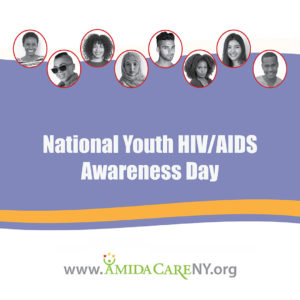National Youth HIV & AIDS Awareness Day: Education Matters More Than Ever

Today’s young people have never known a world without HIV and AIDS, and they are the most important generation in the fight to end the epidemic. In the United States, about one in four new HIV cases is among people ages 13 to 24. Each month approximately 1,000 young people in the U.S. contract HIV, and over 76,000 youth are currently living with HIV. And, as with other age groups, young people of color are disproportionately impacted.
National Youth HIV & AIDS Awareness Day (NYHAAD) is April 10, a day to educate the public about the devastating impact of HIV and AIDS on young people, and to highlight the work young people are doing across the country to fight the epidemic.
Eighty percent of HIV diagnoses among young people occur among gay and bisexual men—with Blacks/African Americans accounting for more than half and Latino/Hispanic youth about 25%, according to the Centers for Disease Control (CDC). New York City follows the national trend, with young MSM Black and Latino men receiving more new HIV diagnoses than any other youth group in 2017. There were also more new HIV diagnoses among young Black women in NYC than any other race/ethnicity. Among the city’s 13 to 29-year-olds, there were 886 new HIV diagnoses and 222 new AIDS diagnoses in 2017. Of the approximately 8,300 youth with HIV living in NYC in 2017, 65% had a suppressed viral load. Clearly we need to do better, if we’re going to achieve New York State’s Blueprint to End the AIDS Epidemic in New York by 2020.
Pre-exposure prophylaxis (PrEP) is more than 90% effective at preventing HIV transmission. It has been nearly a year since the FDA approved PrEP for adolescents, yet the rate of PrEP use remains low, especially among youth of color. PrEP can be prescribed to minors in New York State without parental consent, but access to preventive HIV services without parental consent varies geographically throughout the U.S. Sex education in schools also varies nationwide, contributing to low rates of condom use and testing for HIV and STIs.
Young people are often reluctant to seek sexual and reproductive health services because of stigma and discrimination, such as criticism for having sex or a certain sexual orientation, in addition to lack of privacy and confidentiality. Socio-economic challenges are also an obstacle: young people aged 18 to 24 with HIV are more likely than older people to be living in households with low income levels, to have been recently homeless, recently incarcerated, and uninsured.
What can be done?
- Early HIV testing and treatment is crucial.
- Those at risk who are HIV-negative may benefit from PrEP. We must reduce barriers for adolescents by integrating PrEP into general health education and sexual and reproductive health services.
- For those who may have been exposed to HIV through sex or injectable drug use, post-exposure prophylaxis (PEP)is available.
To facilitate all of the above, health staff across the country must be trained to provide adolescent-centered care, including PrEP counseling strategies. Young people should be encouraged to take control of their own sexual health.
Resources
National institute on Drug Abuse for Teens
https://teens.drugabuse.gov/drug-facts/viral-infections-hiv-hepatitis-and-drug-use
Advocates for Youth
https://advocatesforyouth.org/campaigns/national-youth-hiv-aids-day/
CDC
https://www.cdc.gov/features/youth-hiv-aids/index.html
Amida Care is a Medicaid Special Needs Health Plan for people living with and at higher risk for HIV and currently serves 7,000+ members throughout the five boroughs of New York City. Confidential answers are available at 1-855-GO-AMIDA (1-855-462-6432) (TTY 711).
